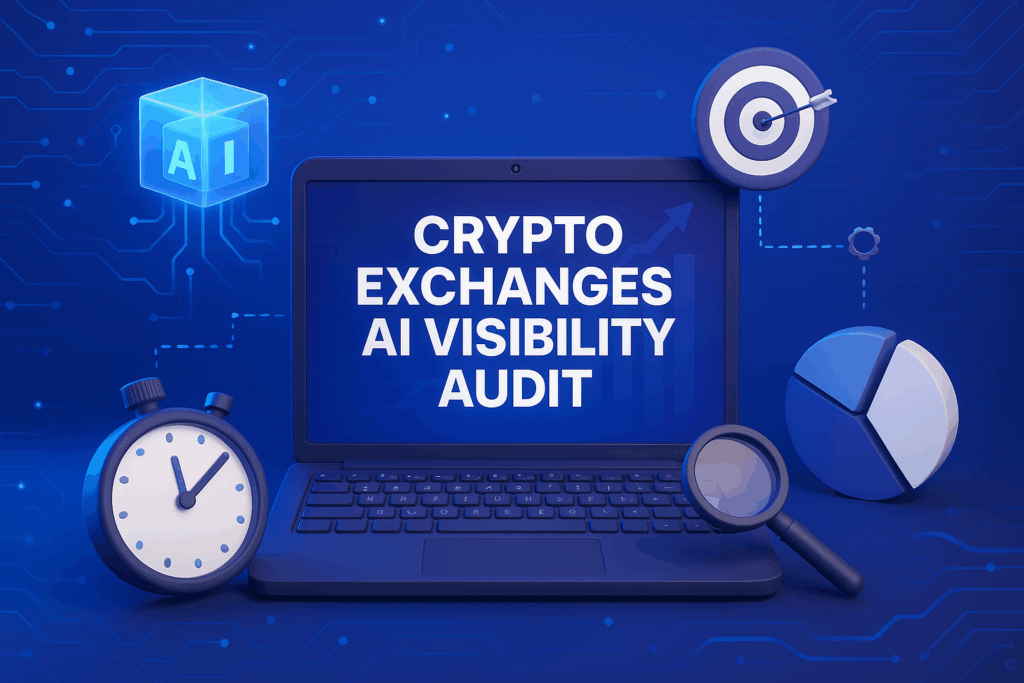share
Create a BEP20 token with us by following these step-by-step instructions. In this article, we will explain all the specifics and look for any hidden stumbling blocks. If you are already familiar with DeFi terms, proceed to the second part of the article, where you will find detailed instructions for setting up a BEP20 token.

What Is the Purpose of a Digital Token?
Basically, it is a smart contract record that confirms the allocation of funds among all participants of a certain transaction. When deploying their own decentralized applications, the owner needs to issue a new token to ensure the unification of all operations.

All blockchain networks have their own cryptocurrencies, and it is technically impossible to replace one currency with another — you can only exchange them. Historically if you wanted to convert dollars to rubles, you needed to go to a currency exchange office or a bank. In the online world, there are no banknotes, with their role performed by a blockchain code record. Exchange of such records between different protocols is simply impossible. You can buy one cryptocurrency by paying with another, though, for example, on Binance Chain.
Tokens on-chain solve this problem by acting as universal securities. They have specific rules and ensure smart contract compatibility within one technology. More often used the Ethereum network.

What Are Smart Contracts?
Technically, it is a source code that uses conditional statements to describe the rules of transactions. For example, “If the sender confirms a transfer, N coins are transferred to the recipient’s wallet address.” Smart contracts are programmed by users or created automatically by special services.
By deploying a contract, its creator (or owner) initiates the recording of the program on every node. The program is encoded, which is why it is very difficult to hack a token contract. The program can be launched by request for receiving or sending a digital token.
What Is the Connection Between a Token and Smart Contracts?
Simply put, a token arises and exists as part of a contract. Many actions according to the specified conditions change the existing data. This is how assets are moved between various addresses.
The token balance is saved in a smart contract table that consists of two columns – the wallet address of the recipient/sender and the amount of an asset. In order to find out this information, connect your wallet to a token contract.

What Are BEP20 Tokens?
BEP20 is a standard for the development of smart contracts that contains a set of technological rules of the Binance Chain environment, describing the functions of the source code. Based on the common ERC 20.
Vitalik Buterin, a Russian programmer, based the Ethereum blockchain on the concept of a smart contract that was initially developed in the 1990s. He came up with the rules of smart contract and token creation that were as simple as possible but still efficient and implemented them in the Ethereum network. The main idea was to develop smart contracts that can be used universally with rules that have a flexible format. Since Buterin’s blockchain can solve any task (describe any task as a program that under certain circumstances will have true conditions and will be performed) which is why it is a Turing Complete programming language. For users, it means that the Ethereum blockchain allows implementing any idea at all.
The basis of the technology is the Ethereum virtual machine. At one time, it was this concept that attracted many users to the ecosystem of digital assets. Binance Chain is a global blockchain exchange that solves the problems of users thanks to Binance Smart Chain (BSC). You can deploy your own applications in it generate tokens. And the BEP20 token is a token standard (a protocol for developing smart contracts), which is almost identical to ERC20. This means that any BSC tokens correspond to the ERC20 token.

Who Might Need to Create a BEP20 Token?
First of all, token ownership can be useful for entrepreneurs who develop a business in DeFi. There are still lots of opportunities in decentralized finance to be explored which is why many startups appear in this sphere. A project is presented as a white paper and promoted. Companies issue their own new tokens and distribute them as part of an initial offering among their first followers. If a project becomes successful, both token creator and token owner gain profit.
Another group of users who might need a BEP20 token are entrepreneurs who would like to ensure the maximum safety of their transactions. It is enough simply to create a smart contract with the conditions of a transaction, mint a token (that can be pegged to any cryptocurrency), and launch the program.
Cost to Create BEP20 Token
The price for the creation is equal to the commission of the site. For example, on Binance, you will currently pay about 3.5 USD.
Why Binance Smart Chain Network?
On the surface, it seems that the Ethereum blockchain is more reliable as it has operated for almost nine years while Binance Smart Chain was only launched last year. However, the fork was designed not as a source of additional income for the Binance Chain exchange owners. Its main purpose is to improve the capabilities of the main blockchain. First and foremost, it concerns the technical characteristics.
- The block time of the Binance Smart Chain is only 3 seconds.
- The transaction (gas) fee is several times lower than that of the Ethereum blockchain.
A BEP20 token is easy to implement, and it can be checked using the Binance Smart Chain. Users do not have to generate a contract on the main network at once but instead can use the service implemented by Binance Smart Chain for testing a token source code.
How to Make Your Own BEP20 Token: Step-By-Step Instructions
Setting up a Wallet
Most often, a Metamask wallet is used because Binance Smart Chain supports its extension. Another option is a Trust Wallet.
Find the “Download” button on the official website and choose the browser to install the extension. In our case, it is Google Chrome.
Click “Install” in the browser’s web store. Skip the tutorial video and proceed to set up a wallet. After you have entered and confirmed your password, you need to copy and save a secret recovery phrase which is a randomly generated sequence of words. This step is very important because this phrase is used for generating a private key to your wallet.
After the confirmation, a wallet is ready to be used.
Connecting to the Binance Smart Chain Testnet
Right now, we are connected to the Ethereum blockchain. Select Binance Smart Chain.
Fill in the form by adding the information of the Binance Smart Chain Testnet. You can copy the lines from the table below.
| network name | BSC Testnet |
| RPC URL | https://data-seed-prebsc-1-s1.binance.org:8545/ |
| Chain_ID | 97 |
| Currency_Symbol | BNB |
| BNB block explorer URL | https://testnet.bscscan.com |
Topping up the Account
So far, the wallet is empty.
To obtain coins, you need to visit the Binance Smart Chain website (https://testnet.binance.org/faucet-smart) and input your wallet address. You will need assets to register smart contracts and pay transaction fees.
Copy the address of the wallet.
In less than a minute, 1 BNB (BSC token) will be deposited into the account. Bear in mind that Binance Smart Chain does not give more than one BNB per day.
Writing the Program of a Smart Contract
In order to mint your own BEP20 token, you need to create a token source code in accordance with all protocol requirements. It should feature the basic functionality of a standard interface, with the functions specified in the table below.
| Function | Description | Status |
| totalSupply() | Find out the total supply of issued tokens | READ |
| balanceOf(account) | Find out the number of tokens on the account balance | READ |
| transfer(recipient, amount) | Transfer tokens | WRITE |
| transferFrom(sender, recipient, amount) | Move the specified amount of assets from a sender to a recipient | WRITE |
| allowance(owner, sender) | Find out how many tokens the sender can spend on behalf of the owner. For example, it can be used to withdraw a token and move it to a different platform | READ |
| approve(sender, amount) | Create an approval for the sender to withdraw a token | WRITE |
| Approval(owner, sender, value) | Find out when the approve function was used. The function is related to system events. | EVENT |
| Transfer(sender, recipient, value) | Find out when the transfer function was used. The function is related to system events. | EVENT |
For functions that make records on blockchain networks (functions with a WRITE status), transaction fees are collected.
Ready-made templates for programming such functions can be found online.
Let us name the BEP20 token “AAAToken,” set the token symbol to “ATK,” and leave the default values of initial supply and decimal places. It is possible to generate more tokens, but for illustrative purposes, a million will suffice.
The code uses the Solidity programming language. A description of functions is provided on the openzeppelin website (https://docs.openzeppelin.com/contracts).
Compiling a Smart Contract
In order to get a working contract code, you need to compile it. As the token generator, we will use Remix, a web-based integrated development environment.
To make the process more convenient, we will create a new workspace.
We enter its name.
In the contract folder, we will create a new contract file with the .sol extension and insert it into our contract code. We will generate smart contracts simply, with each contract consisting of one file. Let us go over to the compiler.
We will choose the compiler version 0.8.4 (depending on the Solidity version) and press the compiling button.
Make a BEP20 Token Deployment
After successful completion of all the above-mentioned steps, we will proceed to the deployment tab.
We need to choose the environment.
After that, a request from a wallet is displayed automatically.
When a connection has been established, a wallet address will be shown in the “Account” field. Then we proceed to the smart contract generator Remix and press the orange button. A confirmation pop-up window will be displayed.
After confirming the deployment, we see our first block.

The Amount of the Fee to Create a BEP20 Token
You will see the default fee paid when issuing a token. The fee can be changed, but we do not recommend doing so. If you set up low fees, the transaction might not be performed successfully.
At the moment this article is written, the fee paid is about $3.5.
There have also been certain changes to the wallet. In the “Activity” section, you can click on a transaction to see its details.

A Custom Token and Contract Transaction
Let us copy the identifier, go to https://bscscan.com and choose the test Binance Smart Chain network. BSCScan is a service that allows checking the total supply and transactions, verifying a contract, and viewing token ownership. Let us insert the data and click the search button.
After that, you can check all the information about your own token.
Now you can import your own digital token to a wallet. In the MetaMask wallet, click on “Import tokens” and insert the contract address.
The work is done, and the amount of received tokens is equal to the initial supply specified in the program.
Now you can send your own BEP20 token to anyone else.
Finish of the BEP20 Token Development: Verification and Publication
After following the link containing the token address, the “Contract” tab will appear in the BSCScan, and you need to click the verification link. Fill in the necessary information and confirm the transaction.
Enter the contract code and wait for it to be verified.
For testing purposes, you can create another account in the wallet and send your new tokens to that wallet.
In the deployed contracts section, you will see the transaction.
The Specifics of Developing a BEP20 Token
Token development requires not only programming skills but also the understanding of project algorithms: you need to define the conditions and describe token characteristics:
- whether it is possible to burn tokens;
- who can mint tokens and whether this function can be turned off;
- what are the limits;
- the voting logic;
- whether the token roles should be allocated, or the token will be open to the public;
- whether it is necessary to create your own digital token that the token owner can generate.
All these questions are within the responsibility of an analyst who takes an idea and transforms it into a working algorithm. It is impossible to come up with the best answers for these questions without a deep understanding of smart chain technology and the methodology of creating smart contracts.
At ICODA, you can get an initial consultation and request services of token generation in a BSC network. We analyze the area of interest thoroughly and select the most appropriate characteristics.
Experienced programmers will create a smart contract for your DeFi project, and you can be sure that it will operate reliably. We take care of your privacy and use token standards.
Project Promotion
Usually, it takes some time for an idea to start yielding returns because you need to promote your services and bring attention to them. This is why marketing is an integral part of any startup.
When ordering smart contract development at ICODA, consider making use of our promotion expertise. Our experts have inside knowledge of all the specifics and will be able to present your business in the best way possible.
Conclusion
From the technical point of view, it is not difficult to create BEP20 tokens because you can simply use any token generator and connect a Trust Wallet or a MetaMask wallet. However, it should be taken into consideration that coding is required for creating a smart contract in order to set up the algorithm of the project’s idea. Therefore, its implementation requires a thorough analysis and a simulation of all business processes. This is why it is better to turn to experts who specialize in token development for the Binance Smart Chain network.








